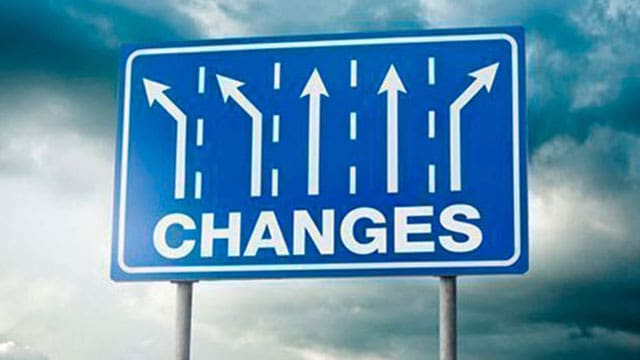Discontinuous change is like leaping off a cliff while building your parachute on the way down
 Two kinds of change – incremental and discontinuous – are taking place simultaneously and constantly in today’s business organizations. Incremental change is the process of continuous improvement – what the Japanese refer to as “kaizen.” Discontinuous change is the kind of large-scale transformation that turns organizations inside out and upside down.
Two kinds of change – incremental and discontinuous – are taking place simultaneously and constantly in today’s business organizations. Incremental change is the process of continuous improvement – what the Japanese refer to as “kaizen.” Discontinuous change is the kind of large-scale transformation that turns organizations inside out and upside down.
Incremental change fits the Newtonian framework of a linear, progressive and predictable world. There is an unmistakable logic behind incremental change that makes it easy to communicate and relatively easy for people to adopt because it uses current practices as a baseline for the systematic improvement of a product, service or system. And we human beings like that. We can base our future success on our past performance.
However, much of the change our organizations face today is not incremental. It is discontinuous. If leading incremental change is like encouraging a group of joggers to gradually pick up the pace, then leading discontinuous change is like asking those same joggers to leap off a cliff and build their parachutes on the way down.
 |
| Related Stories |
| How smiling can transform your business
|
| Four strategies to improve your decision-making skills
|
| Sweet music for business: setting goals and reaching them
|
Discontinuous change – restructuring, re-engineering, transformation, etc. – challenges our most deeply held beliefs about the past. It confronts the entire organization with the possibility that the roles, actions and attitudes most responsible for past success will be insufficient, and perhaps even detrimental, in the future.
That concept is harder to communicate and much harder for people to adopt. We don’t like to contemplate letting go of the skills and behaviours that “got us here.” That’s understandable because that’s basic human psychology – it’s just not an attitude that helps an enterprise move forward.
One of the greatest challenges for a leader who wants their team to thrive in changing times is to identify those practices and attitudes that need to be eliminated to more quickly adopt new behaviours. Here are five key questions that you should ask your team members to consider:
- What do we do best? (What skills, abilities, and attitudes are we most proud of?)
- Which of these current skills, abilities, and attitudes will continue to make us successful in the future?
- What do we need to unlearn? (Which skills are becoming obsolete? What practices – attitudes, behaviours, work routines, etc. – that worked for us in the past may be a detriment in the future?)
- How does our competence stop us from doing things differently? (Where are the “comfort zones” we’re most reluctant to leave?)
- What new skills must we learn to stay valuable to the organization?
Building a culture that is comfortable with – even aggressive about – innovation, risk, and change, means that everyone needs to embrace the process of continuous learning, unlearning, and relearning, which is essential to personal and organizational success.
As the leader, you can begin by identifying those behaviours and attitudes that you personally need to unlearn. Then, address the topic openly: Talk candidly about your problems with letting go of the past, empathize with the feelings of awkwardness that come with leaving the “comfort zone,” and massage damaged egos by applauding all efforts that your team members make.
Carol Kinsey Goman, PhD, is an executive coach, consultant, and international keynote speaker at corporate, government, and association events. She is also the author of STAND OUT: How to Build Your Leadership Presence.
For interview requests, click here.
The opinions expressed by our columnists and contributors are theirs alone and do not inherently or expressly reflect the views of our publication.
© Troy Media
Troy Media is an editorial content provider to media outlets and its own hosted community news outlets across Canada.

